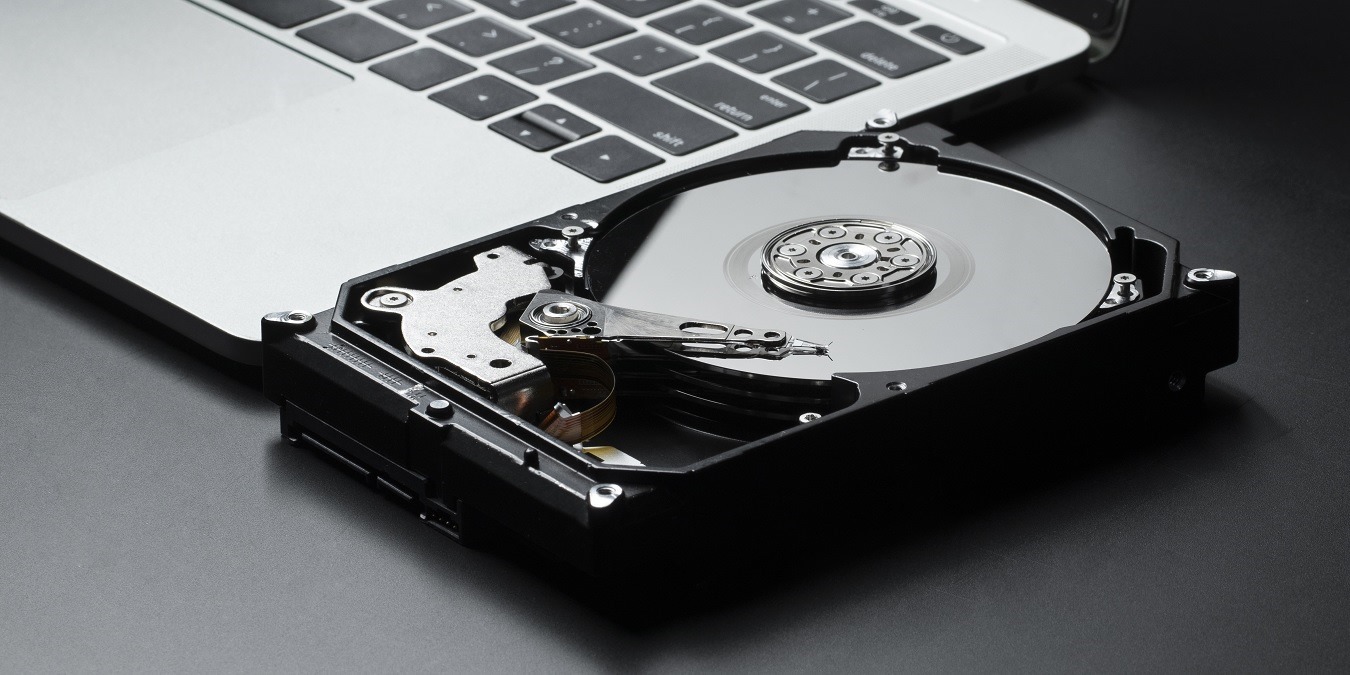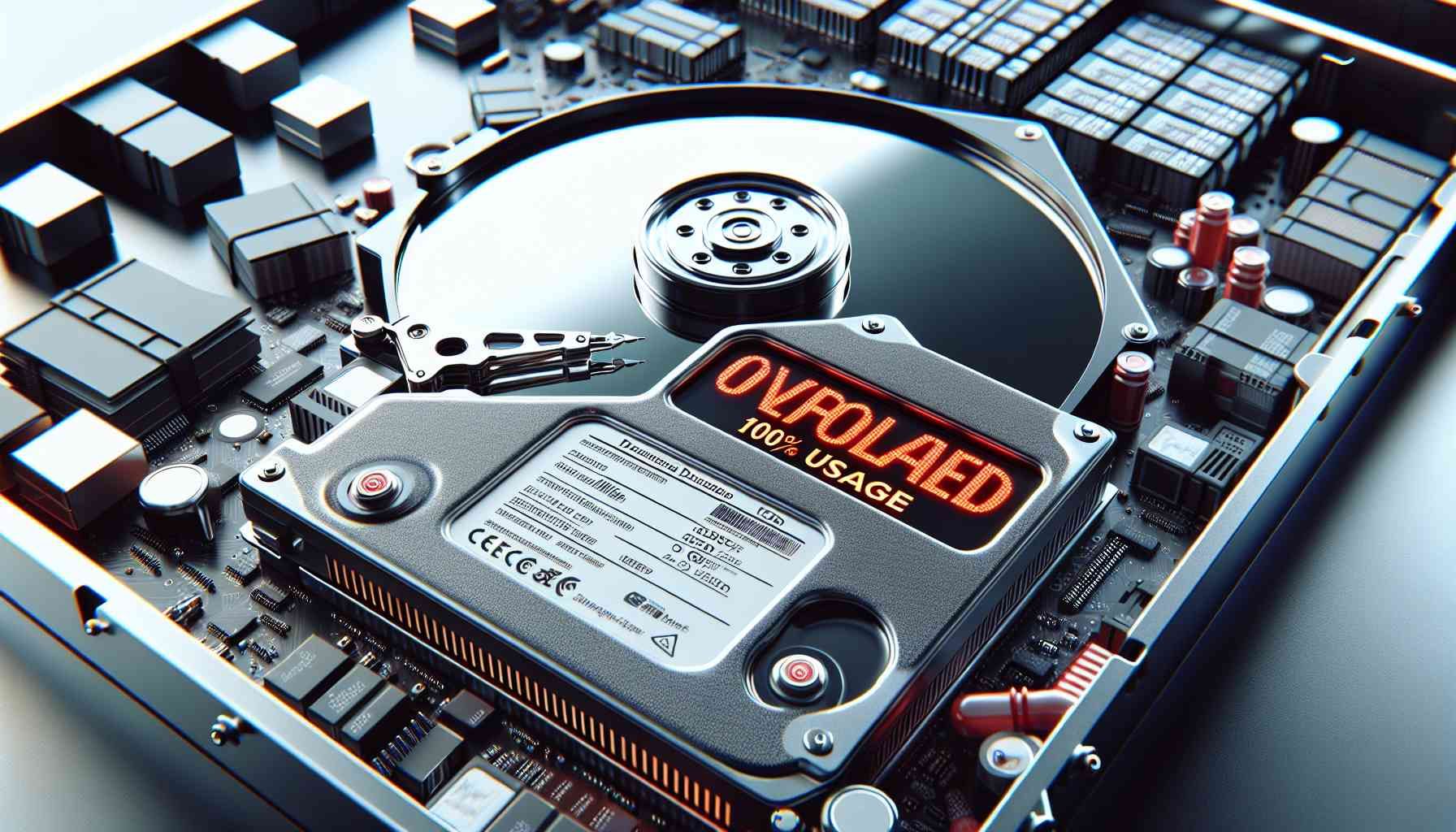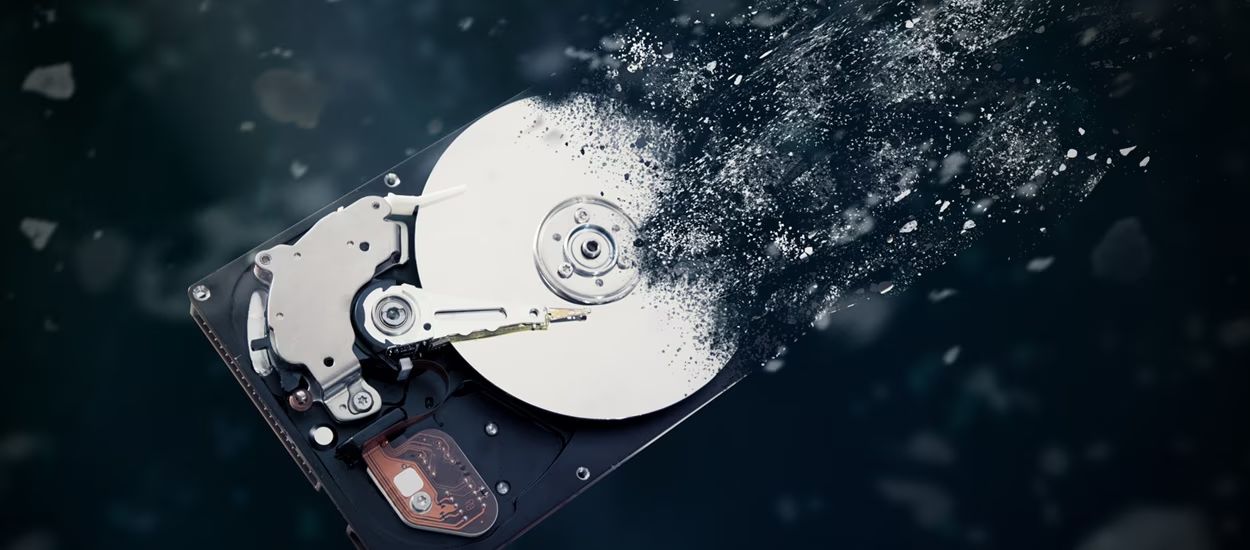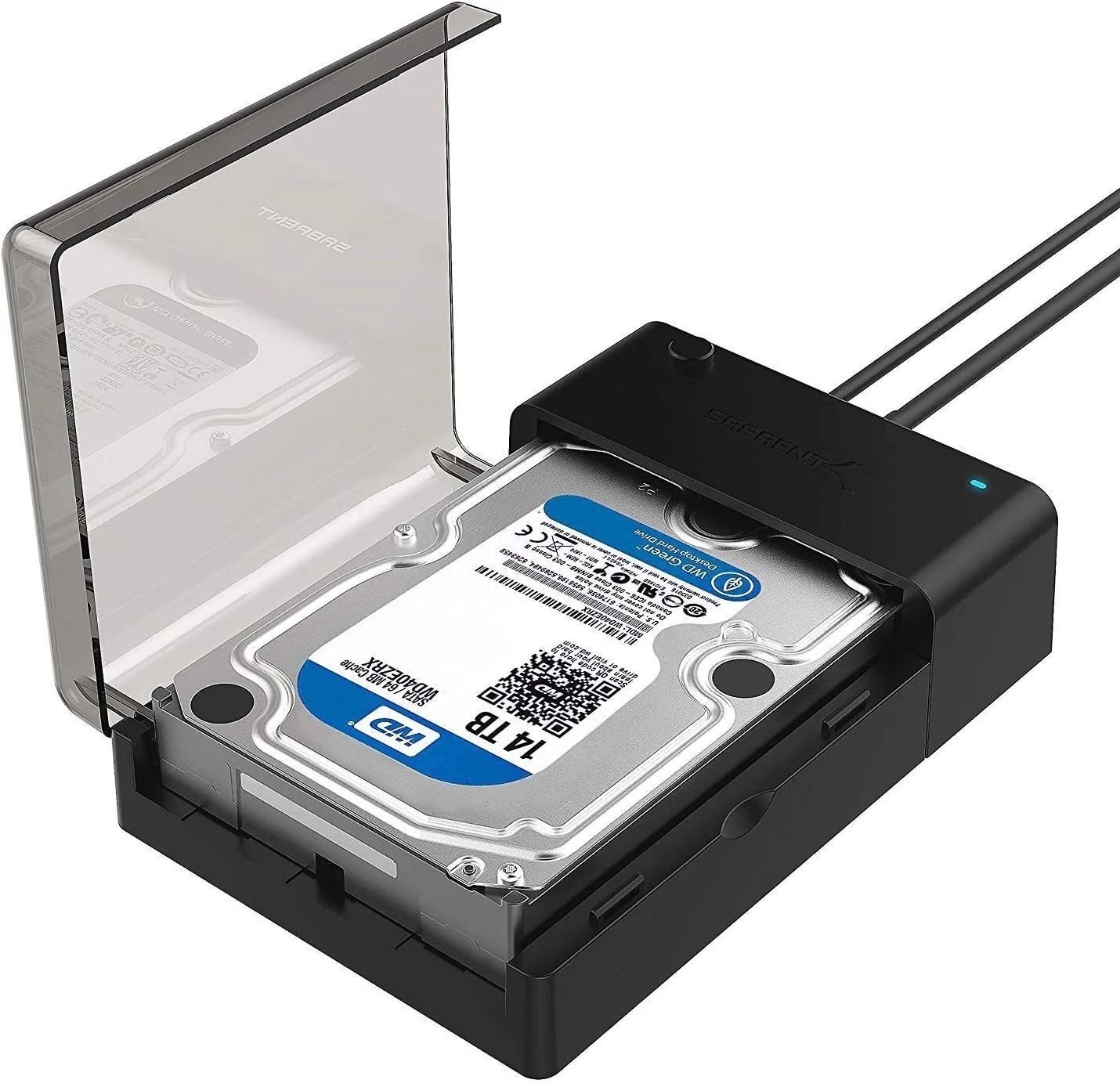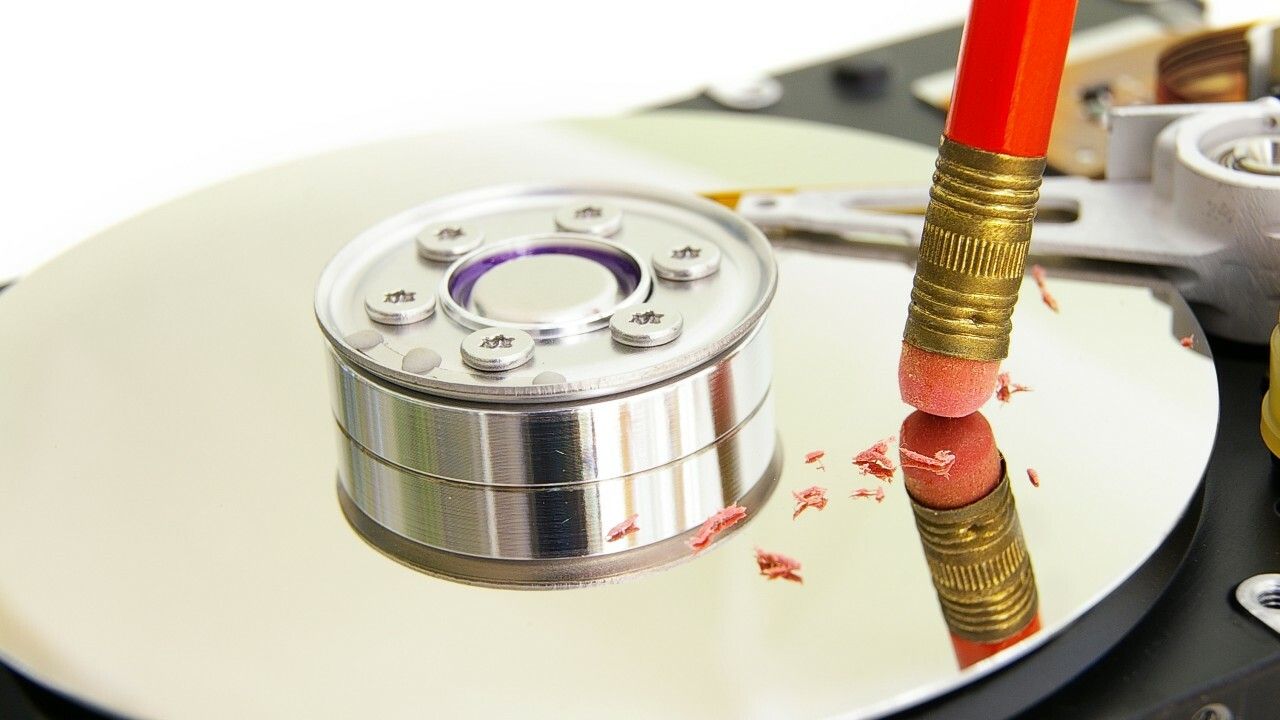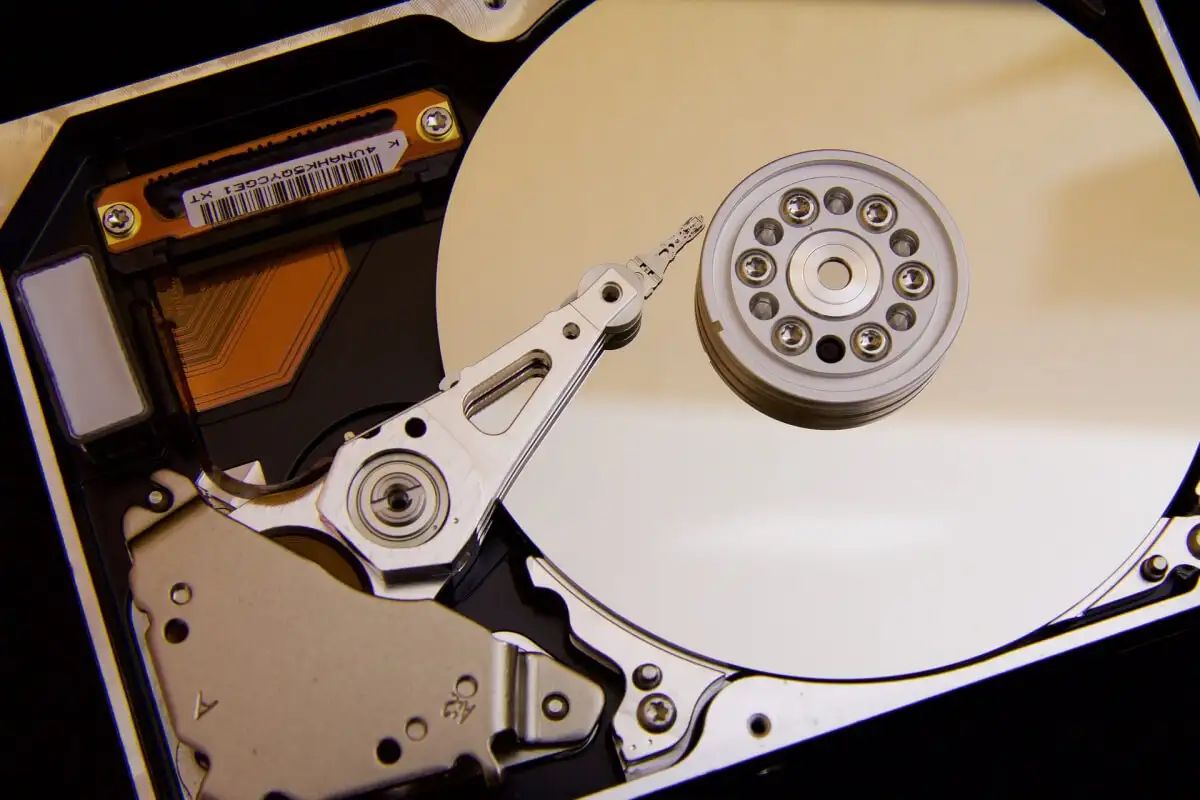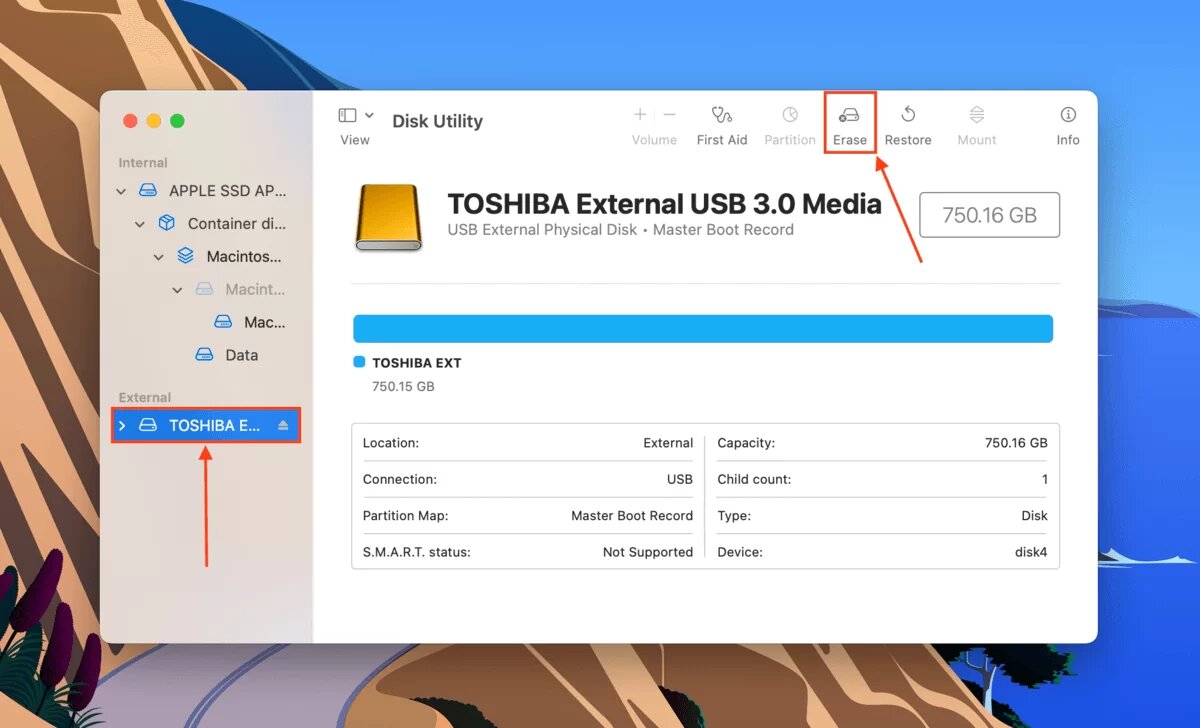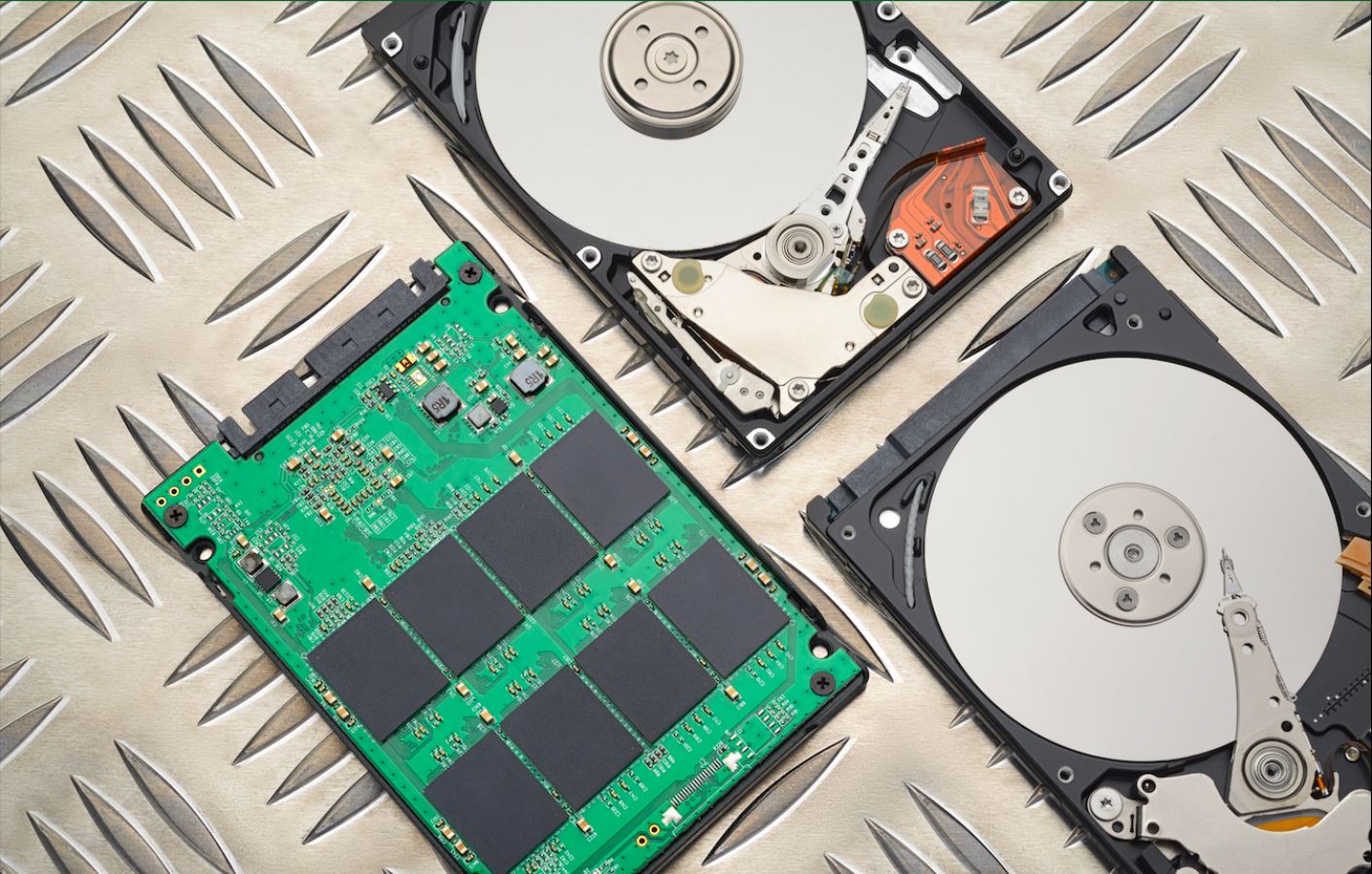Introduction
Welcome to the world of hard disk drives in Windows! If you’ve ever wondered what happens when you delete a file from your hard disk drive, you’ve come to the right place. Understanding how files are handled and recovered in Windows can be a crucial knowledge to have, especially if you’ve accidentally deleted an important file or folder.
In this article, we will delve into the inner workings of Windows and shed light on the processes involved in deleting and recovering files from your hard disk drive. We’ll explore concepts like the Recycle Bin, file recovery tools, and the importance of backing up your files. By the end of this article, you’ll have a better understanding of the potential consequences of file deletion and how to navigate them effectively.
Whether you’re a casual user or a seasoned professional, knowing what happens when you delete a file from your hard disk drive can come in handy. Even though the process may seem simple on the surface, there’s more complexity involved than meets the eye. By gaining insight into how Windows handles deleted files, you’ll be better equipped to recover lost data and take proactive steps to prevent data loss in the future.
So, let’s dive into the intriguing world of hard disk drives in Windows and explore what happens when you hit that delete button. Get ready to uncover the secrets behind file deletion, the Recycle Bin, and the importance of backups!
Understanding Hard Disk Drives in Windows
Before we delve into the intricacies of file deletion in Windows, it’s important to have a solid understanding of hard disk drives (HDDs) and how they work in the Windows operating system. HDDs are the primary storage devices in most computers and are responsible for storing your files, documents, applications, and operating system.
When you save a file on your computer, it is physically stored on the hard disk drive. The data is organized into sectors, which are the smallest units of storage on the HDD. These sectors are then grouped together to form tracks and cylinders, creating a hierarchical structure for data storage.
Windows utilizes a file system, such as NTFS (New Technology File System), to manage and keep track of files on your hard disk drive. The file system keeps a record of the file’s metadata, including its location on the HDD, file name, size, and other essential details.
When you delete a file from your hard disk drive, Windows marks the space occupied by the file as available for reuse. However, the file isn’t immediately erased from the disk. Instead, the file system removes the file’s entry from the file allocation table, making it “invisible” to the operating system.
This process of deleting a file in Windows is known as “logical deletion” because the file still physically resides on the hard disk drive until it is overwritten by new data. Until that happens, the file can potentially be recovered using specialized recovery tools.
It’s important to note that emptying the Recycle Bin or using the “Shift + Delete” shortcut bypasses the Recycle Bin and permanently deletes files immediately. However, even in these cases, the files are still recoverable until new data overwrites the space they occupied on the hard disk drive.
Having a foundational understanding of how hard disk drives operate in Windows is crucial in comprehending the steps involved in deleting and recovering files. With this knowledge, we can now explore the process of file deletion and recovery in more detail.
How Deleting Files Actually Works
When you delete a file from your hard disk drive, you might assume that it’s gone forever. However, the process of file deletion is a bit more complex than that. Understanding how it works can help you grasp the potential for file recovery and take steps to protect your data.
When you delete a file in Windows, the operating system doesn’t immediately remove it from the hard disk drive. Instead, it moves the file to the Recycle Bin, which serves as a temporary storage location for deleted files. This allows you to easily restore accidentally deleted files.
The file system in Windows keeps track of the file’s location on the hard disk drive and marks that space as available for reuse. Essentially, it marks the sectors occupied by the file as “free” and removes the file’s entry from the file allocation table. This process makes the file “invisible” to the operating system, but the data is still intact on the hard disk drive until it is overwritten by new data.
Until the space occupied by the deleted file is overwritten, it can be recovered using specialized file recovery tools. These tools scan the hard disk drive for traces of deleted files, looking for sectors that contain remnants of the deleted data. By analyzing these traces, the tools can reconstruct the deleted file and make it accessible again.
It’s important to note that the chances of successful file recovery depend on various factors, such as the time elapsed since the file was deleted, the amount of new data written to the hard disk drive, and the file system used. The longer you wait and the more you use your computer after file deletion, the higher the likelihood that the space previously occupied by the deleted file gets overwritten, making recovery difficult or impossible.
In some cases, if you empty the Recycle Bin or use the “Shift + Delete” shortcut to delete files, they bypass the Recycle Bin and are deleted immediately. This means that they don’t go to the Recycle Bin and reside in a state of permanent deletion, making recovery more challenging. However, until new data overwrites the sectors occupied by the file, there is still a possibility of recovery.
Understanding how Windows handles file deletion gives you valuable insight into the potential for recovering deleted files. However, it also highlights the importance of proactive measures such as regular backups to safeguard your data effectively.
Permanently Deleting Files
While the default behavior in Windows is to move deleted files to the Recycle Bin, there are times when you may want to permanently delete files and ensure that they cannot be recovered. Whether it’s for privacy reasons or to free up storage space, Windows offers methods to permanently delete files.
One way to permanently delete files is by bypassing the Recycle Bin. You can do this by selecting the file or files you want to delete and pressing the “Shift + Delete” shortcut on your keyboard. This action immediately deletes the files, skipping the step of moving them to the Recycle Bin. However, keep in mind that this method does not guarantee complete eradication of the file. Until new data overwrites the sectors previously occupied by the deleted files, there is still a chance of recovery using specialized file recovery tools.
If you want to ensure the complete and secure deletion of sensitive files, you can use file shredding or secure file deletion software. These tools overwrite the sectors of the hard disk drive occupied by the file with random data, making it extremely difficult or impossible to recover the original file. By repeatedly overwriting the sectors with random patterns, these tools significantly reduce the chances of any remnants of the file being recoverable.
An alternative method for permanently deleting files is to use disk-cleaning utilities built into Windows. These utilities, such as Disk Cleanup and Storage Sense, can help you free up storage space by deleting unnecessary files and system files. When you use these utilities to remove files, Windows takes steps to overwrite the sectors with new data, making it more challenging to recover the deleted files.
It’s important to note that permanently deleting files comes with a trade-off. While it enhances privacy and can free up storage space, it also means that once the files are deleted, they cannot be recovered. Therefore, it’s crucial to double-check and make sure you don’t delete any important files unintentionally.
If you’re concerned about accidentally deleting files or want to have the ability to recover deleted files easily, it’s advisable to set up a reliable backup solution. Regularly backing up your files ensures that even if you accidentally delete something, you have a copy available for recovery.
By understanding the various methods and considerations for permanently deleting files in Windows, you can make informed decisions regarding file deletion and take steps to protect your sensitive data effectively.
The Recycle Bin: Where Deleted Files Go
If you’ve ever deleted a file on your Windows computer, chances are it ended up in the Recycle Bin. The Recycle Bin is a temporary storage location for deleted files and folders, providing a safety net in case you need to recover something you accidentally deleted.
When you delete a file in Windows, the operating system moves it to the Recycle Bin instead of permanently deleting it from the hard disk drive. This allows you to easily restore files if needed, without the risk of losing important data forever.
The Recycle Bin icon typically resides on your desktop, and you can access it by double-clicking on it or selecting it and pressing the “Enter” key. Once inside the Recycle Bin, you’ll see a list of all the files and folders you’ve deleted, organized by the date they were deleted.
By default, the Recycle Bin has a maximum storage capacity, meaning that it can only hold a certain amount of deleted files and folders. When the storage limit is reached, Windows automatically starts deleting the oldest files to make room for new ones. However, it’s essential to note that deleting a file from the Recycle Bin doesn’t free up the disk space immediately. The space occupied by the deleted file is marked as available for reuse but is not reclaimed until new data is written to the disk.
To restore a deleted file from the Recycle Bin, simply locate the file you want to recover and right-click on it. Then choose the “Restore” option from the context menu. The file will be returned to its original location on the hard disk drive, and you can access it as if it was never deleted.
If you mistakenly delete a file and want to recover it quickly, you can also use the “Ctrl + Z” keyboard shortcut immediately after deletion. This action undoes the deletion and restores the file to its original location, bypassing the need to access the Recycle Bin.
However, keep in mind that the Recycle Bin serves as a temporary storage space and doesn’t guarantee the permanent recovery of files. If you accidentally delete a file from the Recycle Bin or manually empty the Recycle Bin, the file is considered permanently deleted. At that point, file recovery tools are the last resort to retrieve the lost data.
The Recycle Bin in Windows provides a safety net for deleted files, giving you a chance to easily restore them if needed. It’s a valuable feature that can greatly reduce the risk of permanent data loss and offers peace of mind when deleting files.
Restoring Deleted Files from the Recycle Bin
Accidentally deleting a file is a common occurrence for computer users, but fortunately, Windows provides a simple and effective way to recover deleted files—the Recycle Bin. Whether you deleted a file by mistake or changed your mind about deleting it, the Recycle Bin offers a straightforward method to restore deleted files.
When you delete a file in Windows, it gets moved to the Recycle Bin rather than being permanently deleted from the hard disk drive. This allows you to easily retrieve deleted files without the need for specialized software or complex recovery procedures.
To restore a file from the Recycle Bin, simply open the Recycle Bin by double-clicking on its icon located on your desktop. You will be presented with a window showing all the files and folders you’ve deleted, organized by the date of deletion.
Once inside the Recycle Bin, locate the file you want to restore. You can browse through the list or use the search function at the top-right corner of the window to find specific files. Once you’ve found the file you want to restore, right-click on it and select the “Restore” option from the context menu.
By choosing to restore the file, it will be returned to its original location on the hard disk drive, as if it was never deleted. You can access it just like any other file on your computer.
If you have multiple files or folders to restore, you can select them by holding down the “Ctrl” key on your keyboard while clicking on each file. Once you’ve selected all the files you want to restore, right-click on any of the selected files and choose the “Restore” option. Windows will restore all the selected files to their original locations simultaneously.
It’s important to note that the Recycle Bin has a storage capacity, and once it reaches its limit, older files will be automatically deleted to make space for new ones. Therefore, it’s a good practice to regularly empty the Recycle Bin, especially if it contains files that you no longer need or want to recover. To empty the Recycle Bin, right-click on its icon and select the “Empty Recycle Bin” option.
In case you accidentally delete a file from the Recycle Bin or manually empty the Recycle Bin, the file is considered permanently deleted. At that point, file recovery tools become the last resort to retrieve the lost data.
The Recycle Bin in Windows offers a user-friendly and convenient method for restoring deleted files. It serves as a safety net, allowing users to recover files with ease and peace of mind.
Emptying the Recycle Bin: Is It Really Gone?
When you delete files in Windows, they typically end up in the Recycle Bin, a temporary storage location that allows you to recover deleted files if needed. However, you may wonder what happens when you empty the Recycle Bin. Does it truly erase the deleted files from your hard disk drive, or are they still recoverable?
When you empty the Recycle Bin, you might assume that the files are permanently deleted and can no longer be recovered. While it’s true that emptying the Recycle Bin removes the files from its interface, the deleted files are not immediately erased from the hard disk drive. Instead, the file allocation table, which keeps track of the files’ locations, is modified to mark the space formerly occupied by the deleted files as available for reuse.
Until new data is written to the sectors previously occupied by the deleted files, the original data may still be recoverable using specialized file recovery tools. These tools scan the hard disk drive, searching for traces of deleted files, and can reconstruct the files based on these traces. However, the longer you wait and the more you use your computer after emptying the Recycle Bin, the higher the chances that the space once occupied by the deleted files gets overwritten, making recovery more challenging or even impossible.
It’s important to understand that the effectiveness of file recovery after emptying the Recycle Bin depends on various factors, such as the length of time since the files were deleted, the amount of new data written to the hard disk drive, and the file system used. If you accidentally delete important files and need to recover them, it’s best to minimize disk activity and immediately use specialized file recovery tools to maximize the chances of successful recovery.
In some cases, emptying the Recycle Bin may not actually free up the disk space immediately. This is because emptying the Recycle Bin doesn’t immediately overwrite the sectors occupied by the deleted files with new data. Instead, it marks the space as available for use. As you continue using your computer, new files may be stored in that space, eventually overwriting the deleted files and making recovery more difficult.
To mitigate the risk of permanent data loss, it’s best to avoid hasty emptying of the Recycle Bin. Take the time to review the contents of the Recycle Bin before emptying it to ensure that you don’t accidentally delete any files that you may need in the future. Additionally, establishing a regular backup routine is crucial to safeguard your important files and protect them from accidental deletion or loss.
While emptying the Recycle Bin removes files from its interface, it’s essential to understand that the deleted files may still be recoverable until new data overwrites the sectors they occupied. Therefore, exercise caution when managing and emptying the Recycle Bin, and consider data recovery options if you accidentally delete critical files.
File Recovery Tools: Last Resort for Deleted Files
Accidentally deleting important files can be a distressing experience. Fortunately, even if you have emptied the Recycle Bin or used the “Shift + Delete” shortcut, all hope is not lost. File recovery tools can often come to the rescue, providing a last resort for retrieving deleted files.
File recovery tools are specialized software designed to scan your hard disk drive for traces of deleted files. These tools utilize advanced algorithms to analyze the sectors on the disk and identify any remnants of the deleted data. By reconstructing these remnants, the tools can recover the deleted files and make them accessible again.
When using file recovery tools, it is crucial to act quickly. The longer you wait and the more you use your computer after the file deletion, the higher the chances of the deleted data being overwritten by new files. Once the sectors previously occupied by the deleted files are overwritten, recovery becomes much more challenging.
There are many file recovery tools available, both free and paid, each with its own unique features and capabilities. Some well-known file recovery tools include Recuva, EaseUS Data Recovery Wizard, and MiniTool Power Data Recovery. These tools often have user-friendly interfaces that guide you through the recovery process, making it accessible to users of all levels of technical expertise.
When using file recovery tools, it’s important to have another storage device available to save the recovered files. This ensures that the recovered files don’t overwrite any other data on your hard disk drive, potentially causing further data loss.
It’s essential to keep in mind that file recovery success is not guaranteed. The effectiveness of file recovery depends on various factors such as the file system used, the length of time since the file was deleted, and the amount of new data written to the disk. Additionally, file recovery tools may have limitations and may not be able to recover all types of files or files that have been severely damaged.
To increase your chances of successful file recovery, it is important to carefully follow the instructions provided by the file recovery tool, avoid installing the tool on the same disk from which you are trying to recover files, and focus on recovering only the essential files to minimize the risk of overwriting valuable data.
While file recovery tools can be a lifesaver, it’s important to note that prevention is always better than recovery. Regularly backing up your files is the most reliable way to protect yourself from accidental file deletion and Data loss. By having a recent backup, you can restore your files effortlessly without relying on file recovery tools.
File recovery tools can be a valuable resource in recovering deleted files when all other options have been exhausted. However, they should be regarded as a last resort, and it’s always advisable to have a comprehensive backup strategy in place to minimize the risk of data loss and ensure you can recover important files easily.
The Importance of Backing Up Your Files
When it comes to protecting your files from accidental deletion, hardware failure, or other data loss incidents, one of the most crucial practices you can adopt is regular file backup. Backing up your files ensures that even if the worst-case scenario occurs, you can still retrieve and restore your important data.
Accidental file deletion, computer viruses, hardware malfunctions, and natural disasters are just a few examples of the potential risks that can lead to data loss. Without a backup, recovering lost files can be challenging, if not impossible. By having a reliable backup system in place, you significantly reduce the impact of such incidents by having a readily available copy of your files.
There are several methods you can use to back up your files. One common approach is to manually copy your important files to an external storage device, such as an external hard drive or a USB flash drive. This method is simple and convenient, allowing you to have a physical copy of your files that you can access even without an internet connection.
Cloud-based backup solutions are another popular option. These services allow you to store your files securely on remote servers, accessible from any device with an internet connection. Cloud backups provide an extra layer of protection against physical damage, theft, or loss of the local storage device. Providers such as Google Drive, Dropbox, and Microsoft OneDrive offer reliable cloud storage options.
Automated backup software is another valuable tool for ensuring regular backups. These software solutions allow you to schedule automatic backups of specific folders or your entire system, ensuring that your files are consistently backed up without requiring manual intervention. Some backup software options also provide advanced features such as incremental backups, which only back up the changes made since the last backup, saving time and storage space.
The frequency of backups depends on your needs and the importance of the data. For critical files that are frequently updated, such as work documents or important projects, consider setting up a daily or weekly backup schedule. For less critical files, a monthly or quarterly backup may be sufficient.
Having a backup of your files not only protects against accidental deletion and hardware failures but also provides peace of mind in case of unforeseen events such as ransomware attacks or system crashes. It allows you to restore your files to a previous state, ensuring minimal disruption to your workflow and preventing potential data loss.
Remember that updating your backup regularly is crucial. As files change and new ones are created, maintaining an up-to-date backup ensures that you’re protecting the latest version of your data. Make it a habit to periodically review your backup strategy and update it as needed to accommodate changing file sizes, storage device availability, and evolving technology.
Ultimately, investing time and effort into backing up your files is a proactive step towards data protection and peace of mind. It’s a reliable safeguard against data loss incidents, giving you the confidence that your important files are secure and recoverable whenever the need arises.
Conclusion
Understanding how files are managed, deleted, and recovered in Windows is essential for any computer user. By delving into the inner workings of hard disk drives, the Recycle Bin, and file recovery tools, we’ve gained valuable insight into the processes that govern our data.
Deleting files in Windows doesn’t immediately erase them from the hard disk drive. Instead, the files are moved to the Recycle Bin, providing a safety net for easily recovering accidental deletions. The Recycle Bin serves as a temporary storage location, allowing us to restore deleted files with just a few clicks.
However, emptying the Recycle Bin doesn’t guarantee complete deletion of the files. Until new data overwrites the sectors occupied by the deleted files, there is still a possibility of recovery. It’s important to exercise caution when emptying the Recycle Bin to avoid permanent data loss.
In cases where files are permanently deleted or the Recycle Bin is bypassed, file recovery tools become the last resort. These specialized software tools can scan the hard disk drive, locating traces of deleted files and reconstructing them. Act quickly when using file recovery tools, as the chances of successful recovery decrease over time.
Nevertheless, prevention is always better than recovery. Regularly backing up your files is the most reliable way to protect against data loss. Creating backups on external storage devices or utilizing cloud-based backup solutions ensures that you have a safe and readily accessible copy of your important files.
While we’ve explored the intricacies of file deletion and recovery in Windows, it’s important to remember that the practices and principles discussed in this article extend beyond the Windows operating system. They are fundamental concepts applicable to various devices and platforms.
By implementing these best practices and understanding the importance of backup, you can minimize the risk of permanent data loss and confidently navigate the world of file management in Windows and beyond.







